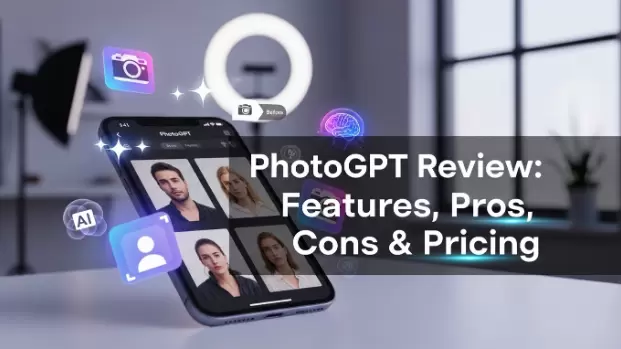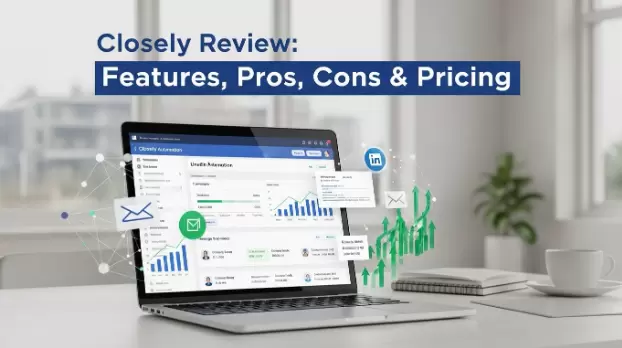Now that we’ve officially settled into the new year, it’s important to reiterate that among the most effective ways to promote your business are Google Ads. Not only do Google Ads increase your brand visibility, but they also make it easier for you to sell your services and products while generating more traffic to your website.
The thing about Google Ads, though, is that setting up (and running) a Google Ads campaign isn’t easy - in fact, it’s pretty beginner-unfriendly and time-consuming. And yet, statistically speaking, no platform does what Google Ads can do when it comes to audience engagement and outreach. Therefore, it will be beneficial to learn about and adopt some smart bidding strategies that can help you get the most out of your Google Ads.
To that end, let’s check out a few different bidding strategies you can put behind your Google Ads campaigns, how these strategies can maximize the results of your Google Ads, and the biggest benefits of each strategy.
Smart bidding in Google Ads: what does it mean, anyway?
Before we cover the bidding strategies that can get the most out of your Google Ads, let’s define what smart bidding means. Basically, it lets Google Ads optimize your bids for you. That doesn’t mean that Google replaces you when you leverage smart bidding, but it does let you free up time otherwise spent on keeping track of the when, how, and how much when bidding on keywords.
The bidding market is simply too big - and changing too rapidly - for any one person to keep constant tabs on it. There are more than 5.5 billion searches that Google handles every day, and most of those searches are subject to behind-the-scenes auctions that determine which ads display based on certain searches, all in a particular order.
That’s where smart bidding strategies come in: they’re a type of automated bidding strategy to generate more conversions and bring in more money, increasing your profits and cash flow. Smart bidding is your way of letting Google Ads know what your goals are (a greater number of conversions, a goal cost per conversion, more revenue, or a better ROAS), after which Google checks what it’s got on file for your current conversion data and then applies that data to the signals it gets from its auctions.
Types of smart bidding strategies
Now that you know what smart bidding in Google Ads is and why it’s important, let’s cover the best smart bidding strategies you can use to your advantage.
Maximize your conversions
The goal of this strategy is pretty straightforward: maximize your conversions and get the most out of your budget’s allocation toward said conversions. Your conversions, be they a form submission, a customer transaction, or a simple phone call, are something valuable that you want to track and, of course, maximize.
The bottom line here is simply generating the greatest possible number of conversions for your budget. This strategy can potentially become costly, so remember to keep an eye on your cost-per-click and how well your spending is staying inside your budget.
If you want to be extra vigilant about keeping conversion costs in a comfy range, you can define a CPA goal for your maximize conversions strategy (assuming you’ve got this feature available).
Target cost per acquisition
The purpose behind this strategy is to meet or surpass your cost-per-acquisition objective that’s tied to your daily budget. When it comes to this strategy, it’s important to determine what your cost-per-acquisition goal is for the strategy you’re pursuing.
In most cases, your target cost per acquisition goal will be similar to the 30-day average you’ve set for your Google Ads campaign. Even if this isn’t going to be your end-all-be-all CPA goal, you’ll want to use this as a starting point.
You’ll have lots of success by simply leveraging target cost per acquisition on a campaign-by-campaign basis, but you can take this one step further by creating a single tCPA bid strategy that you share between every single one of your campaigns. This makes the most sense when running campaigns with identical CPA objectives. That’s because you’ll be engaging with a bidding strategy that’s fortified with a lot of aggregate data from which Google’s algorithm can draw, subsequently endowing all of your campaigns with some much-needed experience.
Maximize clicks
As its name implies, this strategy centers around ad optimization to gain as many clicks as possible based on your budget. We recommend using the maximize clicks strategy if you’re trying to drive more traffic to your website. The best part? Getting this strategy off the ground is about as easy as it gets.
All you need to do to get started with maximizing clicks is settle on a maximum cost-per-click that you then earmark. Once that’s done, you can decide how much money you want to shell out every time you pay for a bid. You don’t actually even need to specify an amount per bid since Google will modify your bids for you to maximize your clicks automatically.
Picture this: you’ve got a website you’re running and want to drive more traffic to it. You decide to set your maximum bid per click at $2.5. Google looks at your ad, adjusts it to $3, and automatically starts driving more clicks per ad (and more traffic to your site), all without ever going over the budget you set for your Google Ads campaign.
Conclusion
If you’ve been using manual bidding until now, you probably can’t help but admit that you spend way too much time wrangling with it. There are plenty of other things you’d rather be - and should be - spending your time on. Plus, bids change so quickly that trying to keep up with them manually isn’t even worth it anymore.
Thankfully, you’ve now got a better grasp on automated and smart bidding after having read through this article, and you’re aware of some important options you have when it comes to strategies for automated bidding. Now’s a good time to explore even more Google Ads bidding strategies and see which ones make the most sense when it comes to your unique and long-term business objectives. Settle on a strategy and then give it a whirl – you’ll only know whether a strategy is right for you after you’ve tested it time and time again. Good luck!


 Table of Content
Table of Content










